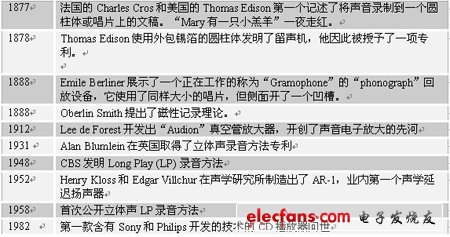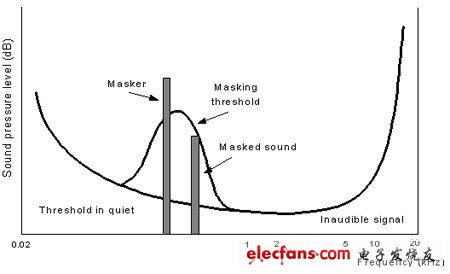At some point in history, audio was the most advanced technology at the time. When Edison invented the phonograph in the United States, he announced the beginning of a revolutionary family entertainment era. People can listen to pre-recorded music in their own homes. Unfortunately, the inherent sound quality invented by Edison is relatively poor. Moreover, the early life of metal foil-based tapes was limited, so the desire for higher audio quality and longer life led to the birth of 78 shellac records.
But the sound quality is still not perfect due to the high noise level and the very low volume level of the speaker amplifier used at the time. The 33 rpm vinyl LP record, vacuum tube and subsequent transistor-based circuit, and stereo record invented by Columbia in 1940 marked another dramatic step in the development of high-performance audio solutions.
Despite the emergence of new technologies from time to time along the way, only the CD (Compact Disc) introduced by Philips and Sony in 1982 contributed to the real beginning of the digital audio revolution. However, although digital audio records and manufacturing technologies are widely used in the traditional record industry, playback devices are still analog.
Whether the substantial improvement in sound quality can benefit ordinary consumers and the adoption of digital audio formats has become a benchmark for measuring future audio systems.

This history of audio technology development has largely focused on the improvement of audio signal reproduction capabilities to restore the original audio signal as accurately as possible in the home.
This principle has been gradually eroded in the past few years as the audio market split into different niche markets, and audio performance, formats, and recording media have been highly optimized for related applications. New products such as Mini Disc, portable MP3 players and DVD video playback systems, while providing consumers with a new audio experience, are also emphasizing that they are not working towards high-performance audio signal reproduction.
Most recent research on digital audio systems has focused on how to drastically reduce the bit rate required to obtain "approximate CD" quality music reproduction. In order to quickly transfer large sound files on a narrow-band telephone network or store them quickly on solid-state media such as flash memory cards, the above efforts are very much needed. For example, using MP3 to encode the CD bit rate can reduce the rate by 11 times, from 12Mbps to 96kbps, but still can reproduce the original sound very well.
There are many different audio compression standards currently on the market, some of which are more successful than others on the market. Are you familiar with audio standards including MP3, Dolby Laboratories' AC-3? , Microsoft WMA and Franhofer InsTItute's AAC. Traditional data compression techniques (such as Huffman encoding or run-length encoder) do not compress audio data very well. Almost all audio compression standards use psychoacoustic models of human hearing.
They use three key technologies. When sounds below the minimum hearing threshold are to be eliminated, frequency masking technology is used. When a signal with a large amplitude is very close to another signal with a lower amplitude, amplitude masking is used. Thus the small signal is masked by the large signal, so the small signal will not be encoded. Finally, when different tones are very close in time, time masking is used. Thus, the high-pitched sound before or after a softer sound can be shielded and discarded.

So, who else cares about high performance? The market looks as if consumers are no longer eager for new higher quality audio standards. But despite the indifferent market sentiment, we are at the forefront of a revolutionary era of providing ultra-high-quality digital audio.
Despite the recent commercial release, DVD Audio is the first high-bandwidth, high-resolution audio system announced in the industry. This special audio format was proposed by the DVD Forum to replace the CD. It is a derivative format of the DVD Video standard. In the future, it may allow playback of audio signals recorded at a 192 kHz sampling rate and up to 24-bit resolution.
The DVD Forum is the earliest decision-making body for the new audio specifications. Its members include: JVC, Panasonic, Pioneer, Samsung and Warner Brothers. An independent organization consisting of 33 member companies (10 original DVD Forum members, plus other companies including Intel Corporation and interested semiconductor companies) is preparing to pay for the development of the DVD-Audio format, which was first published in late 1998 join member fee.
The Audio Working Group of the DVD Forum has published detailed recommendations for 3 types of DVD music discs and 3 types of DVD players, all of which have different capabilities. The specification supports: PCM and compressed audio formats including two-channel 24-bit 96kHz and 192kHz stereo recording, compressed 4/5 / 6-channel programming, and even 24-bit 96kHz front channel data and 24-bit 96kHz surround sound A 5-channel solution consisting of channel data.
Led Parking Light,Parking Lot Lamps,Outdoor Led Parking Lot Lights,Commercial Parking Lot Lights
Changxing Fanya Lighting Co.,Ltd , https://www.fyledlights.com